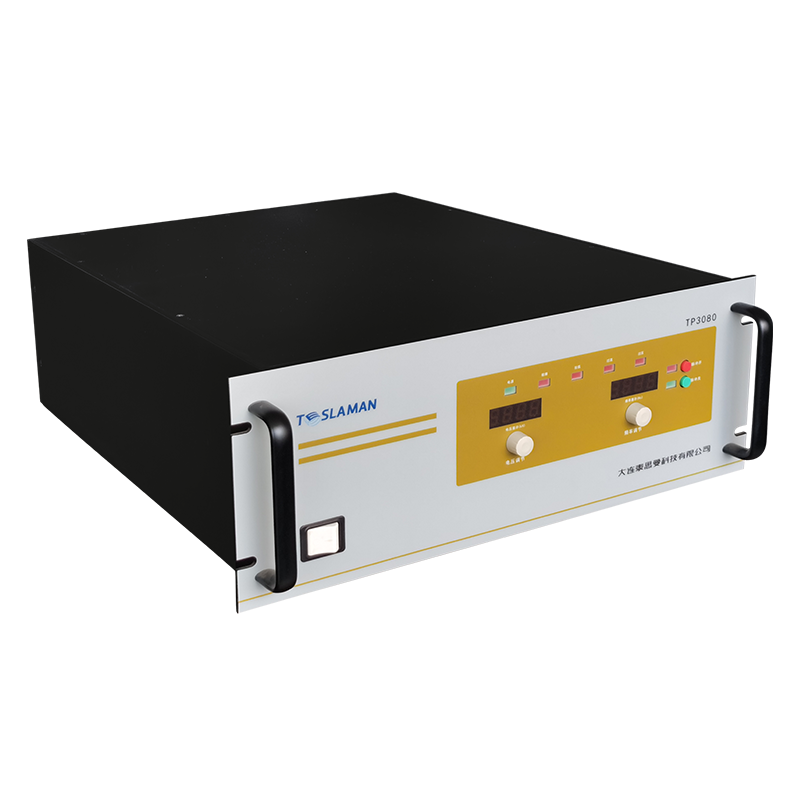Waveform Optimization Strategies for High-Frequency High-Voltage AC Power Supplies
High-frequency high-voltage AC power supplies play a core role in modern industrial, scientific research, and medical equipment, but their waveform quality directly determines the performance and application effectiveness of the power supply. Issues such as waveform distortion, harmonic interference, and electromagnetic noise not only reduce energy efficiency but may also damage sensitive equipment. Therefore, waveform optimization becomes key to enhancing power supply reliability and applicability. This article explores core strategies for waveform optimization in high-frequency high-voltage AC power supplies.
1. Causes and Impacts of Waveform Distortion
Waveform distortion in high-frequency high-voltage power supplies primarily stems from limitations in the voltage slew rate. When the output frequency or voltage amplitude exceeds the device's response capability, sinusoidal waves degrade into triangular waves, leading to increased harmonic components. Additionally, power supply noise (typically in the 10kHz–150MHz range) further introduces spike interference and random fluctuations, affecting the normal operation of microprocessors and precision instruments. In high-voltage applications, dynamic load changes (such as frequent discharges in electrostatic dust removal) can also exacerbate waveform distortion.
2. Optimization Strategies and Technical Approaches
1. Advanced Modulation and Control Algorithms
Employ Sinusoidal Pulse Width Modulation (SPWM) or Space Vector Modulation (SVPWM) techniques, combined with digital signal processors (DSP), to achieve precise waveform generation. For resonant characteristics, the Proportional Resonant (PR) control algorithm and its improved version, quasi-PR control, can effectively track sinusoidal reference signals and suppress harmonics at specific frequencies. For dynamic loads, introducing adaptive PID control and dual-loop feedback (voltage/current loops) can enhance waveform stability and response speed.
2. Resonant Converters and Soft-Switching Techniques
Utilize series resonant topologies (e.g., LC resonant circuits) to reduce switching losses and electromagnetic interference (EMI). By employing frequency modulation (PFM) instead of traditional PWM, switching transistors can operate under zero-voltage (ZVS) or zero-current (ZCS) conditions, reducing voltage/current spikes and thereby smoothing the waveform. This method is particularly suitable for high-power scenarios (e.g., electrostatic dust removal power supplies) and can significantly reduce ripple and switching stress.
3. Magnetic Component and Layout Optimization
High-frequency transformer design requires reducing leakage inductance and distributed capacitance, using voltage multiplier circuits to lower insulation demands. In PCB layout, minimizing high-frequency current loop areas and employing low ESL (Equivalent Series Inductance) capacitors in parallel can reduce radiation noise. Meanwhile, multilayer board design with tight coupling of power and ground planes can minimize ripple propagation. Adding LC multi-stage filters at the filtering stage can suppress high-frequency noise.
4. Heat Dissipation and Anti-Interference Design
High temperatures can exacerbate component parameter drift, leading to waveform instability. Using oil cooling circulation systems to dissipate heat from IGBT modules ensures temperature fluctuations remain below 20°C, enhancing reliability in high-temperature environments. For common-mode and differential-mode interference, isolated ground layout, surge protectors (SPD), and passive filters can mitigate external noise.
3. Conclusion
Waveform optimization for high-frequency high-voltage AC power supplies is a systematic project that requires collaboration across multiple dimensions: topology design, control algorithms, hardware layout, and heat dissipation. Through resonant soft-switching, DSP intelligent control, and EMI suppression techniques, not only can ripple be reduced (potentially below 1%), but the power supply's adaptability in harsh environments (e.g., high humidity, high dust) can also be enhanced. In the future, with the application of wide-bandgap semiconductors and artificial intelligence algorithms, waveform optimization will further advance toward high precision and adaptability.




















